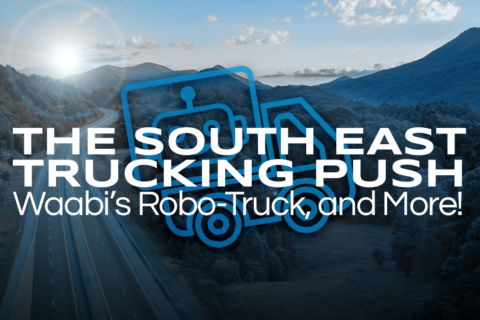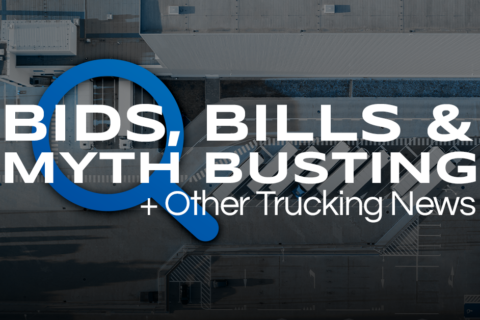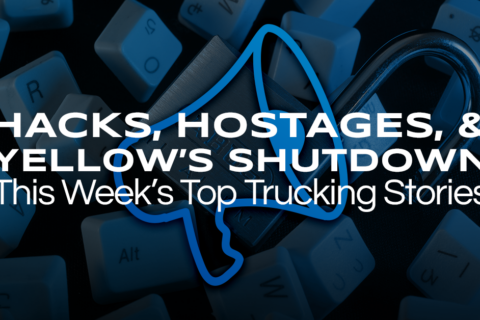The South-East’s Trucker Push, Waabi’s Robo-Ride, and More: This Week in Trucking
In the ever-evolving world of trucking and logistics, there’s no shortage of developments and innovations that impact commercial drivers, logistics personnel, and industrial staff. From initiatives aimed at increasing the qualified truck driver population to the rapid advancements in autonomous trucking, the industry is in a state of flux. This week, delve into the initiatives undertaken in South Carolina to bolster the trucking workforce, the promising trajectory of Waabi Innovation Inc. in autonomous trucking, and how Compassionate Care Technical Center in Knoxville is meeting the demand for CDL training. Stay informed with these curated updates and get a feel for the industry’s current pulse. Affordable Truck Driver Licensing Event CDL Day at the South Carolina Fairgrounds on Wednesday was a much-needed event that provided a successful way to rapidly increase the qualified truck driver population in the state. Run by the Department of Motor Vehicles, the event taught drivers the skills needed for commercial driver’s licenses and permits on the spot. According to Mike Fitts, a spokesperson for South Carolina DMV, South Carolina, along with the the rest of the nation, has had a continuously growing demand for reliables truckers. Trucking Industry in South Carolina Re-Adjusts USC research economist Dr. Joseph Von Nessen has observed a dramatic change in the South Carolina trucking industry as consumers are returning to pre-pandemic purchasing habits. The trucking industry does not want to lose employees and is facing a labor shortage. To combat this, more people will be moving to the region over the next two decades, signaling a brighter outlook for the future of the trucking industry. Residence Seek Accessible Licensing Accessibility to commercial driver’s licensing is especially valuable to South Carolinian residents like Renee Lawson and Pshanda Singleton. The duo took part in Wednesday’s event, hoping to get their credentials and gain important opportunities in this high demand industry. If you missed the CDL day event, you can make an appointment at any of the many DMV locations across South Carolina and the rest of the country. 🔗 Learn more about the trucking industry in South Carolina here Autonomous Trucking Developers Making Way for Waabi Waabi Innovation Inc. has stepped into the autonomous trucking field and made a 10-year pact to haul cargo for Uber Freight. The move comes as the contraction of other developers like Aurora Innovation creates an opportunity for the Toronto-based company, which was founded in June 2021 and raised over $80 million over the last year. Waabi’s ‘Waabi Driver’ technology is based on advanced machine learning and generative AI, enabling it to bypass manual code adjustments and train its systems with real-world and virtual data. Waabi Meets Billions of Miles on Freight Network The agreement between Waabi and Uber Freight will see Waabi Driver capacity used for billions of miles on the freight network in the next decade. This capacity will be available with the ease of a push of a button on Uber’s freight app, available to about 2 million US truck drivers. Additionally, the length of the collaboration allows Waabi to deepen its involvement in the Uber Freight network, which includes its hubs and maintenance services. Waabi Leverages Transfer Hubs Alongside Shipper Partnership Waabi will initially operate a few Peterbuilt Model 579 trucks with advanced sensors, aided by safety monitors, replacing some human drivers with robots. It is launching its autonomous capacity with revenue loads on Interstate 45 between Dallas and Houston beginning this week, with no transfer hubs. Thanks to its shipper partnerships with Uber Freight, Waabi avoids steps required of other autonomous trucking developers, and eventually looks to be on track to integrate autonomous capabilities into a scaled freight network. 🔗 Learn more about autonomous trucking here CDL Training in High Demand Compassionate Care Technical Center in Knoxville, Tennessee recently stepped up to meet the rising need for truck driving training. As reported by the American Trucking Associations, there is currently a need for close to 78,000 truck drivers across the country. Compassionate Care Technical Center provides a 4-week program with a maximum of 8 students to 1 instructor ratio, including training on flatbeds, free CPR and First Aid training for foster families, and more. Financing options and housing assistance are also available to those in need. To learn more, please call or text 865-394-9960 and 865-805-5317 respectively. Offering Support and Inspiration The Center is also proud to provide general education and assistance to adults and teenagers looking to gain job skills. Founder and registered nurse Isaac Wachira came to the United States from Kenya to attend college at Lincoln Memorial University. Since then, he has made it his mission to empower those in need of support. The Center is currently offering a $1,000 discount on the $5,000 total cost for CDL training and the Center is affiliated with driving companies that are willing to pay for the course in exchange for a work commitment. 🔗 Learn more about the Compassionate Care Technical Center here Before You Hit The Road… This week’s stories present an optimistic panorama for the logistics and trucking industry. As South Carolina takes proactive measures to address the trucker demand and as tech companies like Waabi redefine transportation, it’s evident that the sector is both addressing current challenges and positioning itself for the future. With training centers like Compassionate Care Technical Center stepping up, we witness firsthand the unity and resilience of the community. We’d love to hear your thoughts on these developments. Please share your opinions in the comments section below. And remember, for the latest updates, insights, and news summaries, check back next week for another edition of Optimum Logistic’s weekly news recap. Safe travels on the road ahead! If you made it to this part of the article, we’d just like to take a moment to thank you for taking the time to read this weekly recap. Be safe out there and as always, If you’re in search of CDL A, B, or warehouse positions, check out our open positions. And if you need staffing solutions…











Recent Comments